
Since it was the company's second flagship set since re-entering the card market in 1981, many collectors remember the 1982 Fleer baseball card set for its many printing errors.
Clearly, Fleer still had many kinks to work out in their production process.
But, errors aside, there is still plenty to enjoy in the 660-card checklist...
For starters, Cal Ripken Jr.'s card turned out to be one of the most iconic rookie cards of the 1980s.
There are many other big names, too, including guys on the back end of their careers like Carl Yastrzemski, Johnny Bench, and Tom Seaver who started in the 1960s.
And, in this guide, we'll take a look at the fifteen most valuable.
Let's jump right in!
1982 Fleer #176 Cal Ripken Jr. Rookie Card
Estimated PSA 10 Gem Mint Value: $2,700
On May 30th, 1982, Cal Ripken started at third base for the Baltimore Orioles during an ordinary home game against the Toronto Blue Jays.
Batting eighth in the order, he did little to help starting pitcher Jim Palmer's cause, going 0-2 with a walk and a strikeout.
However, Ripken wasn't the only one on the team who struggled at the plate that day, as catcher Rick Dempsey was the only Baltimore player to get a hit.
Toronto starter Jim Gott threw six innings of one-hit baseball before Roy Lee Jackson entered in relief and tossed three innings of no-hit baseball to get the save.
The 21,632 fans at Memorial Stadium that day thought they were simply watching the Blue Jays batter three-time Cy Young winner Jim Palmer for the 6-0 road win.
But, none of them had any idea they were watching the beginning of one of the most iconic individual streaks in all of sports history unfolding.
Ripken may have been unremarkable that day, but it was the first of 2,632 consecutive games he would play before voluntarily ending his streak before the final home game of the 1998 season.
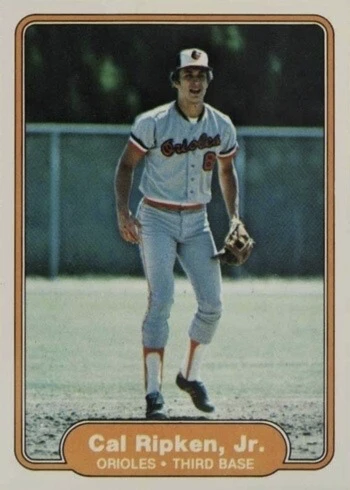
1982 Fleer #576 John Littlefield
Estimated Pitching Lefty PSA 10 Gem Mint Value: $1,800
Estimated Pitching Righty PSA 10 Gem Mint Value: $50
After pitching in the St. Louis Cardinals' Minor League system from 1976 to 1980, John Littlefield made his Major League debut with them on June 8, 1980, in the fourth inning of a 4-6 road loss to the Montreal Expos.
He'd finish the year with the team lead in saves (9) to go along with a 5-5 record and 3.14 ERA.
The following season, Littlefield found himself as a member of the San Diego Padres' bullpen, where he would finish at 2-3 with two saves, a 3.66 ERA, and 21 strikeouts in 64 innings of work.
And then, suddenly, Littlefield was back down in the Minor Leagues in 1982 as a member of the Syracuse Chiefs, the Toronto Blue Jays Triple-A affiliate.
And after 1982, Littlefield was out of baseball for good.
So, why is his 1982 Fleer baseball card worth so much if he had such a brief and unremarkable career?
Well, it's not.
At least the corrected version of his card showing him pitching as a right-hander isn't.
But, Fleer also mistakenly printed a version of his card showing him as a lefty, and that card has gone down in hobby history as one of the most infamous and valuable error cards of the 1980s.
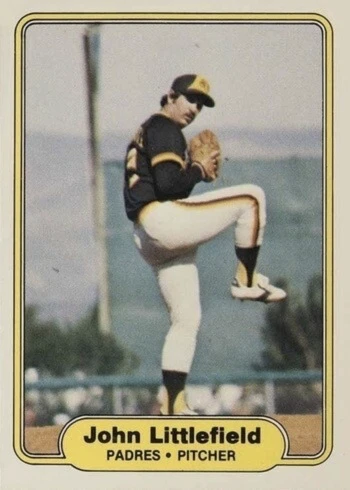
1982 Fleer #256 Pete Rose
Estimated PSA 10 Gem Mint Value: $1,000
In his fourth decade of Major League baseball and in his early 40s, Pete Rose continued to defy time and age as he appeared in all 162 games for the Philadelphia Phillies in 1982.
It wasn't his best season, but it wasn't his worst either, as he still made his sixteenth All-Star team of his career.
On the year, Rose finished with a .271 batting average, 172 hits, 80 runs scored, three home runs and 54 RBI to help the Phillies to an 89-73 record.
Unfortunately, that was just shy of the St. Louis Cardinals, who finished at 92-70, so Philadelphia would have to settle for second in the NL East.
And for Rose personally, that wasn't the only mark he would finish just shy of during the 1982 season.
During the team's final game on October 3 against the New York Mets, Rose went 1-2 at the plate with a run scored to help Philadelphia to a 4-1 victory.
That single to left field he hit that day in the bottom of the fifth inning just happened to be his 3,869th hit, putting him within striking distance of Ty Cobb's record of 4,189 career hits.
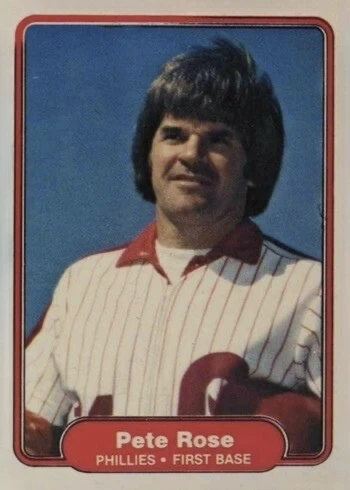
1982 Fleer #229 Nolan Ryan
Estimated PSA 10 Gem Mint Value: $125
1982 was a disappointing year for Houston Astros and their mercurial ace Nolan Ryan.
After finishing fourth in the National League's Cy Young race in 1981 with a league-best 1.69 ERA, Ryan returned to Earth in '82 to end the year with a 16-12 record and a 3.16 ERA.
Don't get me wrong, that wasn't a terrible ERA, but it was nearly double his mark from the year before, and Ryan's control problems played a big part in this.
He led MLB in walks issued for the seventh time in his unparalleled career (109) and paced the NL with eight hit-by-pitches.
On the flip side, Ryan topped the NL with just 7.0 hits allowed per 9 innings and finished third in the league with 245 strikeouts.
It was a mixed bag for the 35-year-old hurler during a dismal season for the Astros.
After two-straight playoff appearances, Houston regressed to a 77-85 record and a fifth-place finish in the NL West.
Ryan and the Astros would not return to the playoffs until 1986.
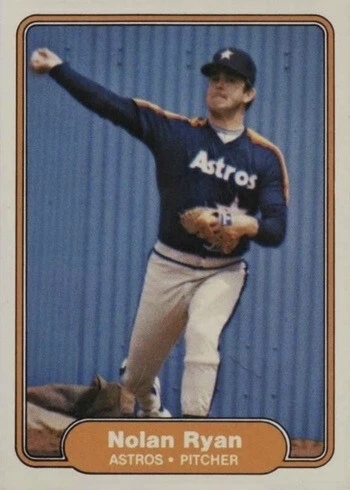
1982 Fleer #603 Lee Smith Rookie Card
Estimated Error PSA 10 Gem Mint Value: $125
Estimated Correct PSA 10 Gem Mint Value: $70
After starting the final game of the 1981 season for the Chicago Cubs, a 3-6 loss to the Philadelphia Phillies, Lee Smith started another five games for the Cubs in 1982.
However, he didn't do so hot in those five games, giving up 17 earned runs and taking four losses and one no-decision to bring his record as a starter to 0-5.
But, that was a good thing in the long run.
For the rest of his career, Smith would return to working exclusively out of the bullpen to carve out a legacy as one of the greatest closers in MLB history.
With Fergie Jenkins returning to pitch for Chicago in 1982 and giving his best pointers combined with working with pitching coach Billy Connors, Smith added a devastating slider to his arsenal.
In 18 opportunities, Smith saved 17 of them to finish with the team lead in saves and an impressive 2.69 ERA.
The Cubs were terrible in 1982, finishing fifth in the NL East with a 73-89 record, but they had seemingly found their go-to closer in Smith.
By next season, Smith would appear in his first of seven career All-Star Games as he marched toward 478 career saves.
You can find this card in two variations, one with the Cubs logo correctly positioned on the reverse of the card and the other with it flipped upside down as an error.
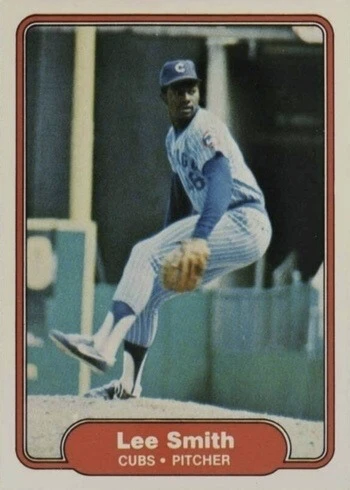
1982 Fleer #92 Rickey Henderson
Estimated PSA 10 Gem Mint Value: $95
"We didn't have the home run hitters, we didn't have the players," Hall-of-Fame outfielder Rickey Henderson said of the 1982 Oakland A's.
"When we'd go to Spring Training, all we had were "scrap players," and Billy Martin would say, 'All we can do is run. Everybody's going to run.'"
After a trip to the ALCS following the strike-shortened 1981 season, the A's were a shell of their former selves.
They couldn't hit, they couldn't pitch, and they simply didn't have the personnel to compete, falling to 68-94 in 1982 and fifth place in the division.
However, it wasn't for lack of results on Rickey Henderson's part.
Finishing tenth in the American League's MVP race and earning his second All-Star nod in his first four years, Henderson stole a jaw-dropping 130 bases to break Lou Brock's modern-day MLB record of 118.
He also paced the league with 116 walks, the first of four times he'd do so in his legendary career.
The A's were terrible, but Oakland fans at least had the pleasure of watching Henderson play.
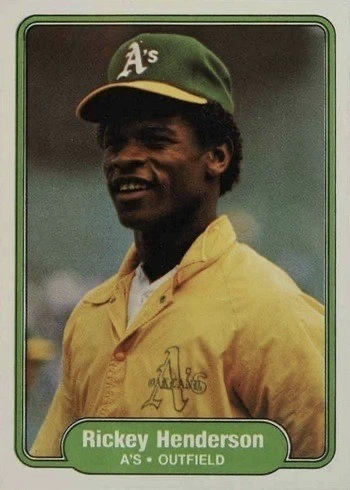
1982 Fleer #643 Rickey Henderson Most Hits and Runs
Estimated PSA 10 Gem Mint Value: $80
Rickey Henderson led the league in steals and runs five times during his Hall of Fame career and in one of them, the 1981 season, he also led the league in hits.
To celebrate his accomplishment, Fleer included him in the subset that spanned cards #628 to #646 that highlighted key players and moments from the 1981 season.
On the front of the card, you'll notice that Fleer mentions Henderson having the most hits and runs while neglecting to mention the stolen bases.
Given that nobody could touch him in that category, maybe Fleer felt it was already understood he'd be the leader.
Or, maybe it was an honest printing mistake, given how sloppy they were at the time.
Either way, the reverse of the card contains a nice write-up commemorating his leadership in all three categories.
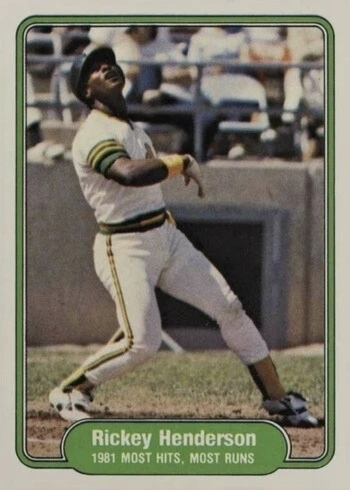
1982 Fleer #57 Johnny Bench
Estimated PSA 10 Gem Mint Value: $55
By 1982, Johnny Bench's days as the catcher for the Cincinnati Reds were long gone.
Instead, after bringing him over from the New York Mets, the Reds installed a young Alex Treviño behind the plate and moved Bench over to third base.
At 34 years old, Bench couldn't produce the incredible numbers he had posted during the 1970s, but the Reds wanted to extend the iconic superstar's career as much as possible.
In 119 games, Bench batted .258 with 13 home runs, 38 RBI and 44 runs scored for a Reds team that was pretty terrible.
After finishing in first place in the NL West during the 1981 split season with a 66-42 record, Cincinnati failed to win as many games in a complete 1982 season.
At 61-101, the Reds barely beat out the Minnesota Twins (60-102) to avoid having the worst record in the Majors.
With Bench one year away from retirement and the days of the dominant Big Red Machine teams of the 1970s in the rearview mirror, things were pretty gloomy for Reds fans in 1982.
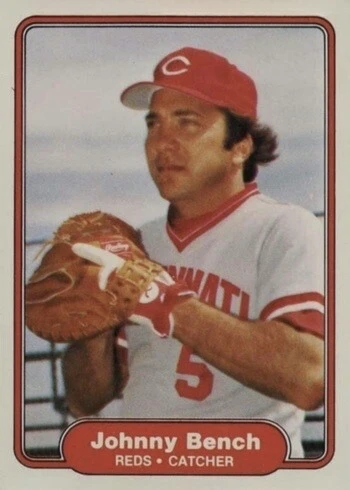
1982 Fleer #258 Mike Schmidt
Estimated PSA 10 Gem Mint Value: $55
Before the 1982 season, Mike Schmidt and the Philadelphia Phillies agreed to a six-year deal that would guarantee at least $10 million for the future Hall of Fame third baseman.
Over 148 games, Schmidt belted 35 home runs with 87 RBI while also scoring 108 runs, thanks largely to his MLB-best .403 on-base percentage.
Schmidt also led the NL in slugging percentage (.547), OPS (.949), OPS+ (161), and walks (107).
Recognized as one of the best players in the league on both sides of the ball, Schmidt also picked up his third-straight Silver Slugger and seventh-straight Gold Glove.
Though the Phillies had certainly got their money's worth, there would be no three-peat for Schmidt as NL MVP though he did finish sixth in the vote.
Unfortunately, there would also be no postseason for the Phillies under new head coach Pat Corrales as their 89-73 record didn't quite top the first-place St. Louis Cardinals at 92-70.
The following season, Schmidt would get a crack at another World Series ring after the Phillies swept Los Angeles in the NLCS but, unfortunately, they'd lose in five to the Baltimore Orioles in the 1983 World Series.
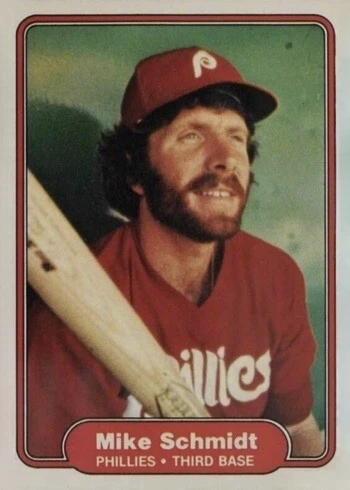
1982 Fleer #312 Carl Yastrzemski
Estimated PSA 10 Gem Mint Value: $55
Only one other player in MLB history, Brooks Robinson, has played as many seasons (23) with one team as Carl Yastrzemski spent with the Boston Red Sox.
And from 1961, when Yastrzemski entered the league, to 1977, when Robinson retired, the two crossed paths quite a bit as the Red Sox and Orioles squared off year after year.
In 1982, Yaz was in his 22nd season with Boston and, at 42 years old, played well enough to earn his seventeenth selection to the All-Star team.
Though he was a seven-time Gold Glover from years past, Yaz spent most of the 1982 season as the team's designated hitter.
In that role, Yaz slashed .275/.358/.431 with sixteen home runs, 72 RBI and 53 runs scored.
His contributions helped the Red Sox to an 89-73 record and a third-place finish in the AL East as the Milwaukee Brewers finished six games in front of them to win the pennant.
Yaz would retire after the 1983 season, having played in the second-most games in MLB history (3,308) behind Pete Rose who played in 3,562.
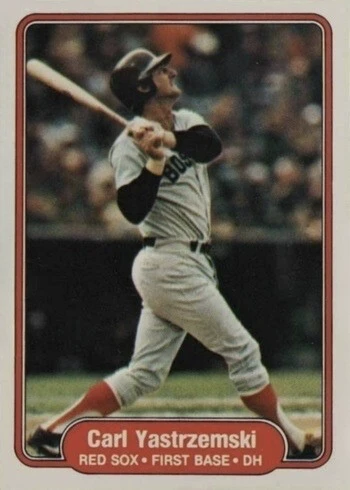
1982 Fleer #405 George Brett
Estimated PSA 10 Gem Mint Value: $55
During the 1980 season, George Brett tapped into an otherwordly source of batting skill that saw him hit for a .390 average that no MLB player has been able to top since.
And with that incredible season came the expectation that he might be able to hit like that consistently.
But, two years later, Brett was firmly back on Earth with a .301/.378/.505 slash line to go along with 21 home runs and 82 RBIs.
His seventh All-Star selection in a row to go along with a twentieth-place finish in the MVP vote affirmed his place as one of the game's top players.
With a 90-72 record, the Kansas City Royals were one of the game's top teams, too, but the California Angels were just a bit better at 93-69 to capture the AL West.
George Brett and the Royals were fantastic in 1982, but without another batting title or a playoff birth, some in the media still made the season out to be a big failure.
Those kinds of lofty expectations would travel with Brett for the rest of his career after that magical 1980 season.
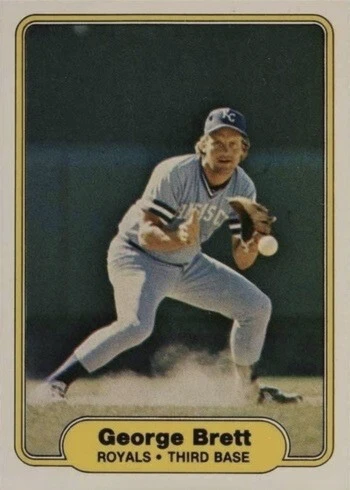
1982 Fleer #443 Dale Murphy
Estimated PSA 10 Gem Mint Value: $55
After taking home back-to-back MVP awards for the 1980 and 1981 seasons, the baseball world wondered if Mike Schmidt could become the first player to three-peat in 1982.
However, despite a solid season and sixth-place finish in the vote, Schmidt would step aside as Dale Murphy of the Atlanta Braves was crowned the 1982 NL MVP.
That year, the Braves were great under new manager Joe Torre, winning their first division title since 1969.
And it was Murphy's play on both sides of the ball that had a massive impact on their winning ways as he collected his first Gold Glove and Silver Slugger awards as well.
With a .281/.378/.507 slash line to go with 36 home runs and an NL-best 109 RBIs, Murphy took another step forward in solidifying his reputation as one of the game's best of the 1980s.
After suffering a three-game sweep to the St. Louis Cardinals in the NLCS, the door was slammed on the resurgent Braves' hopes for a possible World Series ring.
But, Murphy would pick up right where he left off the next season and capture his own second-straight MVP in 1983.
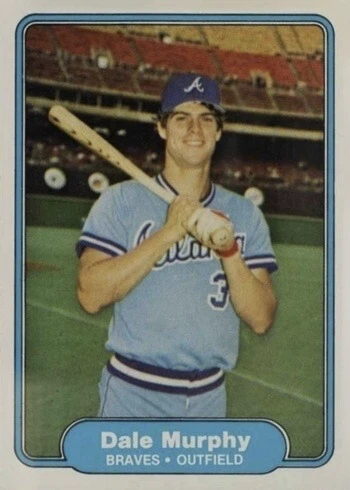
1982 Fleer #582 Ozzie Smith
Estimated PSA 10 Gem Mint Value: $55
Four years into his career with the San Diego Padres, the one-time All-Star and two-time Gold Glover felt at home.
So, when he was traded to St. Louis in December 1981 as part of a six-player deal that sent Garry Templeton to the Padres, Smith wasn't having any of it.
Smith delayed the transaction for nearly two months with a no-trade clause in his contract.
It seemed like the trade might never get done and then Smith had a heart-to-heart with St. Louis manager Whitey Herzog who helped convince him to be a Cardinal.
With Smith's all-world defense in tow, St. Louis outraced the rest of the NL East for its first division title of MLB's Divisional Era.
And in the National League Championship Series against the Atlanta Braves, Smith proved plenty with an unforeseen offensive explosion, hitting .556 with a massive 1.171 OPS, three RBIs, and a stolen base.
The Cardinals steamrolled the Braves in a convincing three-game sweep. The World Series, though, was a much more challenging proposition.
St. Louis fell behind three games to two to Milwaukee before taking Games 6 and 7 at home, stunning the Brewers for their first World Series title since 1967.
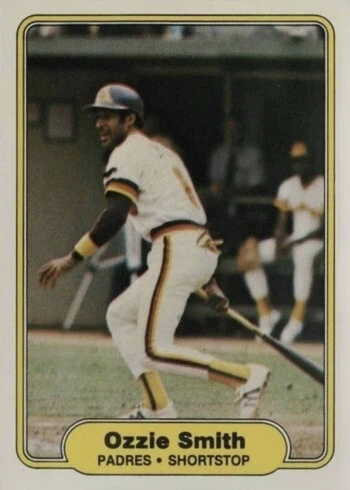
1982 Fleer #39 Reggie Jackson
Estimated PSA 10 Gem Mint Value: $50
After five years in the Bronx pressure cooker, Reggie Jackson was fed up and ready to return to his roots in California, signing a five-year contract with the California Angels before the 1982 campaign.
The Angels felt like they were just a piece or two from returning to contention, and Jackson was the free-agent coup they needed to return to the top of the AL West for the first time since 1979.
After two years in the baseball wilderness, Jackson strapped the Halos to his back and carried them to the postseason.
He looked rejuvenated in his first year in Southern California, placing sixth in the American League's MVP race and bringing home his second Silver Slugger Award.
The 12-time All-Star was a middle-of-the-order juggernaut in '82, slashing .275/.375/.532 with an MLB-best 39 home runs and 101 RBI.
The postseason, however, was a much different story.
Mr. October was nowhere to be found, as Jackson hit just .111 with a homer and two RBI in California's five-game American League Championship Series loss to the Milwaukee Brewers.
It was one of the worst full-series playoff performances of Jackson's career.
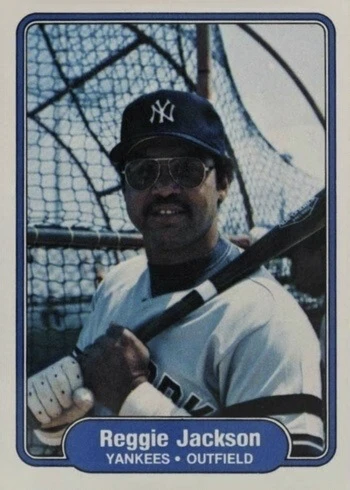
1982 Fleer #24 Dave Stewart Rookie Card
Estimated PSA 10 Gem Mint Value: $45
Long before he was one of the most feared starters in the game during the late 1980s and early 1990s, Dave Stewart was still trying to find where he specialized in 1982.
During the 1981 split season, the Los Angeles Dodgers used Stewart exclusively out of the bullpen, where he pitched effectively with a 2.49 ERA and a 1.25 WHIP to finish 4-3 with six saves.
Stewart then got his first taste of postseason play that year, struggling during the NLDS against the Houston Astros before calming down in the team's World Series victory over the New York Yankees.
But in 1982, Stewart contributed in various ways on the mound.
After utilizing him out of the bullpen in April, the Los Angeles Dodgers mixed him between the starting rotation and relief for several months before sending him back to the bullpen full-time in September.
Across 45 games and 146.1 innings of work, Stewart started fourteen games, finished nine, and tallied a 9-8 record, with one save.
In 1987 as a member of his hometown Oakland A's, Stewart's reputation would change forever.
With the help of Oakland pitching coach Dave Duncan, Stewart would rattle off four-straight 20-win seasons and build a reputation as a lethal postseason force by winning two World Series and two ALCS MVPs.
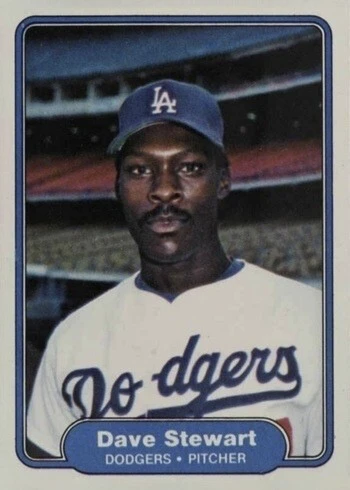
1982 Fleer Baseball Cards In Review
As you can see, Fleer's follow-up to their flagship 1981 release made up for the many printing issues they faced by offering some great cards.
Cal Ripken Jr.'s rookie card easily sits at the top of the list as the most desirable, but plenty of other star and Hall of Famer cards will keep you busy.
And, don't forget, Fleer included those team logo stickers for the first time, too, after losing a court decision that said Topps was the only company that could include gum in their packs.
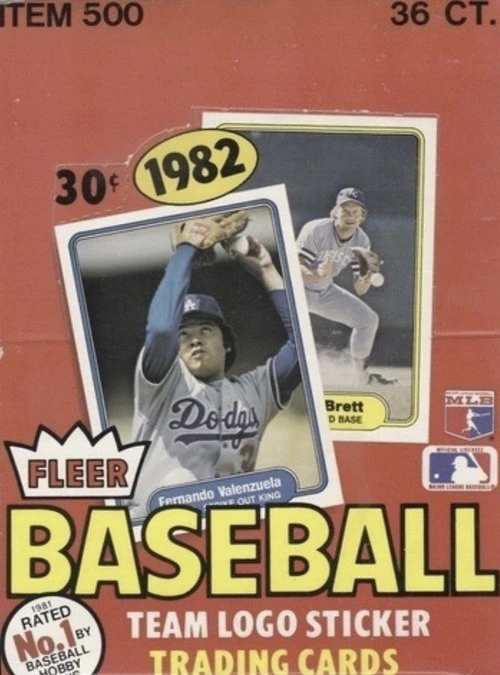
As far as subsets go, Fleer did squeeze one in with cards #628 - #646 commemorating significant player achievements and magic moments from the 1981 season.
Some collectors may find the design boring, but others appreciate its simplicity.
It's hard to pick a favorite Fleer set from the 1980s but this one ranks among my favorite.
